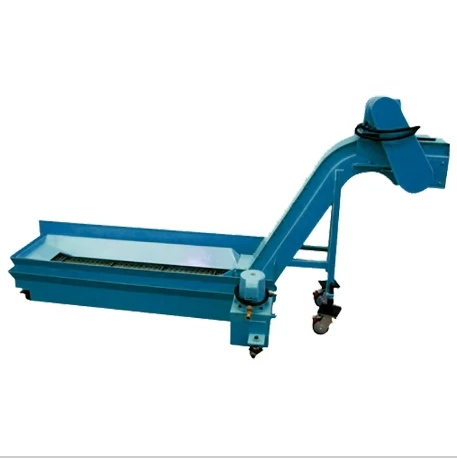chip conveyor
Understanding Chip Conveyors Enhancing Efficiency in Manufacturing
In the manufacturing sector, efficiency and precision play critical roles in the overall productivity and output quality. Among the essential components that contribute to this efficiency is the chip conveyor. This piece of equipment is integral in the machining industry, where metalworking processes generate chips or scrap material that must be effectively managed to maintain a clean and efficient workspace. In this article, we will delve into the significance of chip conveyors, their functioning, types, and benefits to manufacturers.
What Are Chip Conveyors?
Chip conveyors are mechanical devices designed to remove waste materials, particularly metal chips, from machining areas. When machines such as lathes, milling machines, or grinders operate, they cut and shape materials, often producing metal shavings or chips. If left unmanaged, these chips can accumulate, leading to potential safety hazards, production slowdowns, and machine malfunctions. Chip conveyors are the solution to this problem, efficiently transporting chips away from the machining process to designated containers for recycling or disposal.
How Do Chip Conveyors Work?
The operation of chip conveyors is relatively straightforward, yet highly effective. These systems utilize belts, rollers, or augers to transport chips from the machining area to a collection point. Most modern chip conveyors are automated and are integrated with machining centers, allowing for real-time chip removal as machining processes occur. This is vital in maintaining a consistent workflow and avoiding interruptions caused by chip accumulation.
The process generally begins with the machine tool generating chips during operation. As chips are produced, they fall onto the conveyor system, where they are either carried away on a moving belt or pushed along by an auger. Depending on the design of the chip conveyor, various mechanisms such as magnetic strips, troughs, or hinged belts may be employed to facilitate the movement of different chip types and sizes.
Types of Chip Conveyors
Chip conveyors come in several types, each designed to meet specific needs and applications
1. Metal Hinged Belt Conveyors These conveyors are robust and ideal for heavy-duty applications, particularly in environments that generate large, heavy chips. They feature a series of metal slats linked by hinged belts that can handle both dry and coolant-laden chips.
2. Auger Conveyors Utilizing a spiral auger, these conveyors are effective for transporting small or fine chips. The screw-like mechanism ensures continuous movement and is ideal for confined spaces.
chip conveyor

3. Magnetic Chip Conveyors Designed to handle ferrous chips, these utilize magnetic properties to capture and transport metal shavings effectively. They are beneficial for operations generating significant amounts of magnetic materials.
4. Flexible Conveyors These are versatile options that can be adjusted to fit varying layouts of manufacturing floor plans. They can change direction and accommodate different chip types.
Benefits of Chip Conveyors
Implementing chip conveyors in a manufacturing setting can yield a multitude of benefits
1. Improved Efficiency By automating the chip removal process, manufacturers can minimize downtime and keep machines running smoothly. This leads to higher productivity levels and optimized manufacturing processes.
2. Enhanced Workplace Safety Accumulated chips can create unsafe working conditions, leading to slips, falls, or equipment malfunctions. Chip conveyors help maintain a cleaner workspace, promoting safety for operators.
3. Reduced Labor Costs Automating the chip disposal process reduces the need for manual intervention. This not only saves time but also lowers labor costs, allowing workers to focus on more critical tasks.
4. Environmental Benefits Chip conveyors facilitate the recycling of metal shavings which can be repurposed or sold, contributing to sustainability efforts within the manufacturing sector.
Conclusion
In conclusion, chip conveyors represent an essential component of modern manufacturing operations. Their ability to efficiently manage waste material enhances overall productivity, promotes a safer working environment, and contributes to cost savings. As manufacturing technologies continue to advance, the importance of systems like chip conveyors will only grow, driving further innovations in efficiency and sustainability within the industry. Investing in high-quality chip conveyors could be a strategic decision for manufacturers looking to optimize their operations and maintain competitiveness in a rapidly evolving marketplace.








